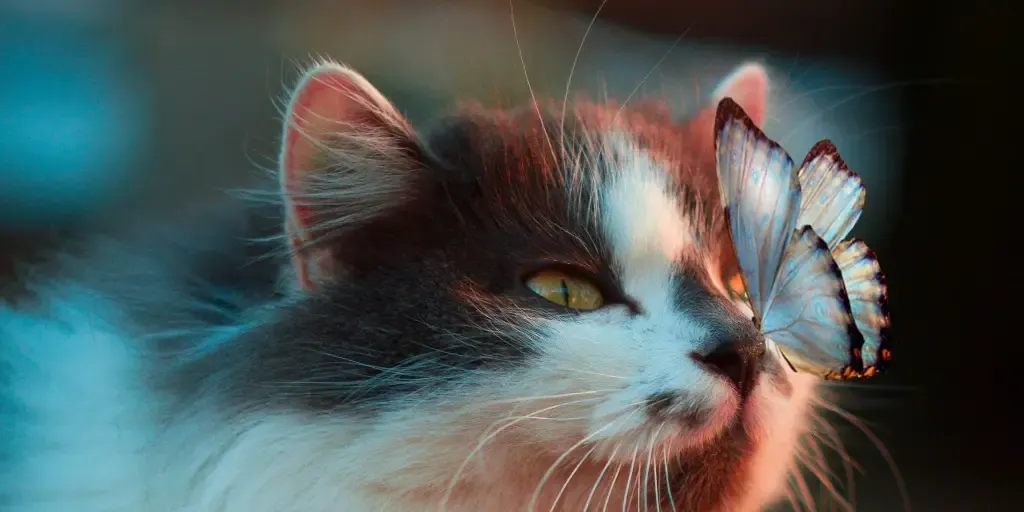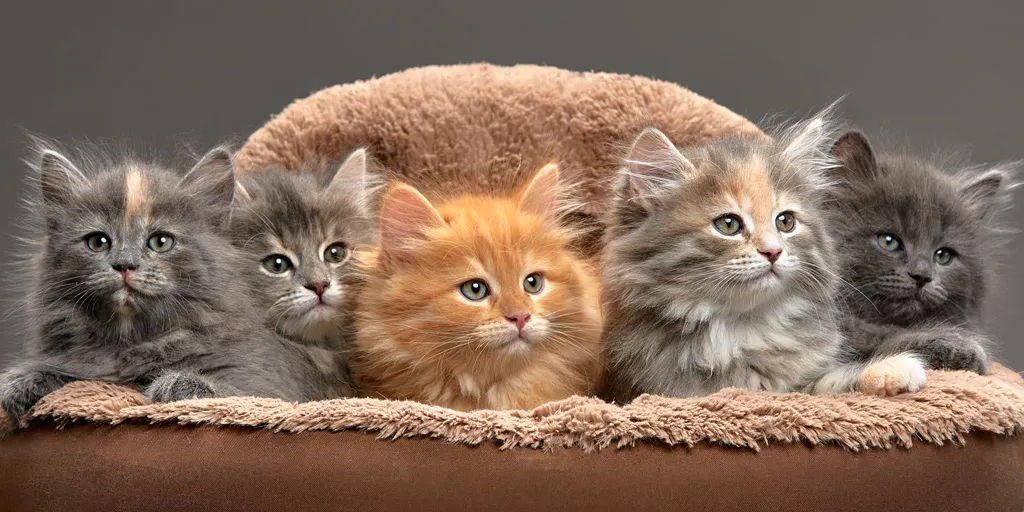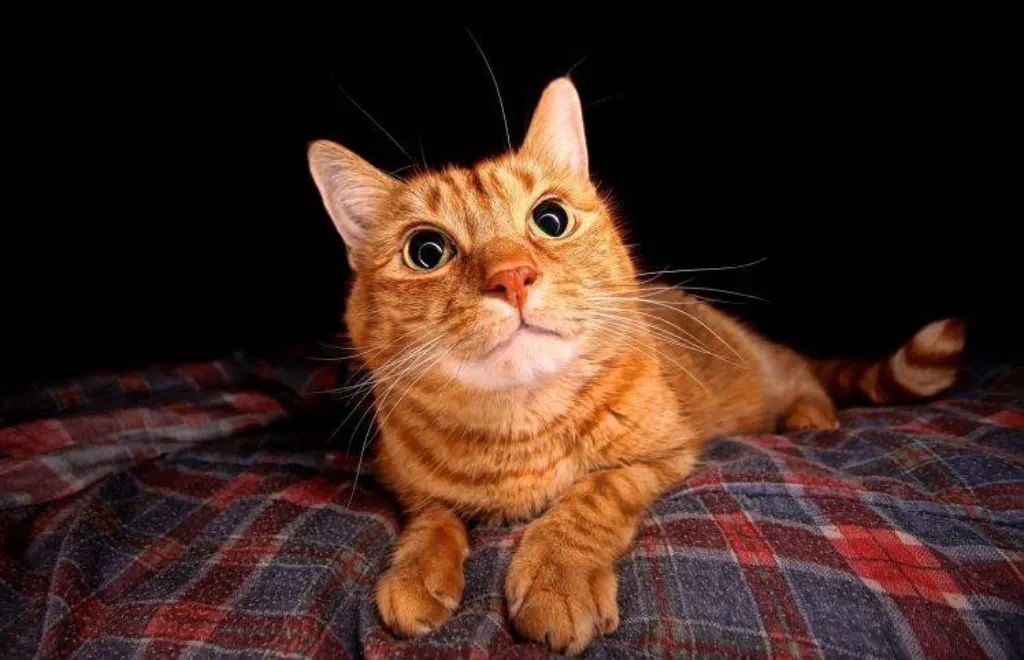
Anatomy & Senses
Dentition & Claws
Sharp canine teeth secure prey, while retractable claws stay protected when not in use—allowing silent stalking and a sure grip when pouncing or balancing.
Night Vision
The tapetum lucidum layer in their eyes lets cats see with just 15–20 % of the light humans require, their pupils dilating to take in maximum illumination.
Hearing & Smell
Cats detect sounds from 500 Hz up to 32 kHz and rely on a highly developed olfactory system—crucial for social cues and territorial marking.

Behavior & Instincts
Solitary Hunters, Social Companions
While they hunt alone in the wild, domestic cats form strong bonds with people and other pets, displaying affection, curiosity, and even jealousy in multi-cat households.
Righting Reflex
Their flexible spine and tail help them twist mid-air to land “on their feet” from falls as low as three feet.
Vocal Range
Adult meows mimic infant cries to elicit caregiving; cats use dozens of distinct sounds to express needs or emotions.
Grooming
Keratin-hooked papillae on the tongue clean fur and remove loose hair—though often leading to hairball formation.

Coat Colors & Patterns
- Tabby
Stripes or spots (classic or mackerel), often marked by an “M” on the forehead. - Tortoiseshell
Blends of black and orange (sometimes with gold); nearly always female. - Color-Point
Darker face, ears, paws, and tail (e.g., Siamese). - Bi-/Tri-Color
Patches of color on white backgrounds. - Solid
Uniform single colors—black, white, gray, chocolate, etc. - Rare Variations
Harlequin, mitted, van, and locket patterns.

Notable Breed Exceptions
Maine Coon
Weighs up to 7–12 kg yet retains typical feline reflexes and retractable claws.
Scottish Fold
Distinguished by uniquely folded ears.
Domestication & Diversity
Cats were first domesticated around 9 000 years ago in the Fertile Crescent to control pests. Today, over 70 recognized breeds share curiosity, grace, and independence—reminders of both their wild heritage and their place in our homes.
Key Takeaways
- Cats are specialized hunters with retractable claws, keen senses, and remarkable reflexes.
- Their coat colors and patterns span tabby, tortoiseshell, color-point, bi-/tri-color, and solid.
- Despite breed variations, all cats retain natural instincts and offer companionship and comfort.
FAQs
How do cats’ retractable claws benefit them?
Retractable claws stay protected when not in use, allowing cats to move silently, maintain traction when climbing or balancing, and keep their claws sharp for hunting or defense.
What enables cats to see so well in low light?
Cats possess a tapetum lucidum—a reflective layer behind the retina—that amplifies available light, letting them see with only 15–20% of the illumination humans need.
Why do cats “right” themselves when falling?
Thanks to a flexible spine and tail, cats perform the righting reflex: they twist midair to orient their bodies so they land on their feet, even from heights as low as three feet.
What are the main coat patterns in cats?
Common patterns include tabby (stripes or spots), tortoiseshell (black-orange blend), color-point (darker extremities), bicolor/tricolor (patches on white), and solid (uniform color), plus rarer van and mitted variations.
How long have cats been domesticated?
Cats were first domesticated around 9,000 years ago in the Fertile Crescent to help control pests; today over 70 recognized breeds share traits of curiosity, grace, and independence.